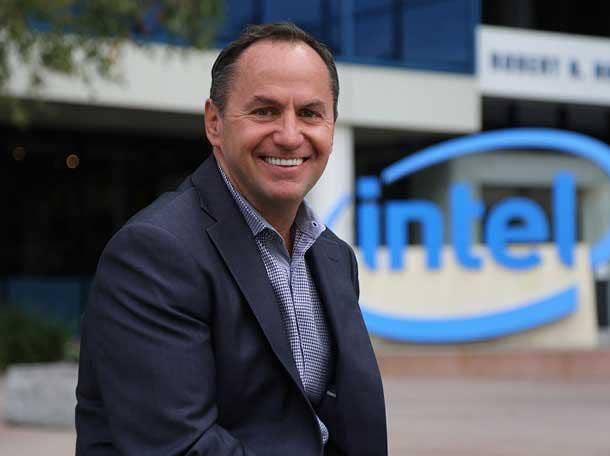Intel Data Center Rebounds As CPU Shortage Drags PC Sales
'We're letting our customers down, and they're expecting more from us,’ Intel CEO Bob Swan says of the chipmaker's CPU shortage, which has been going on for more than a year.

Intel said sales of its Xeon processors helped the chipmaker's data-centric businesses rebound after two quarters of declining revenue as client processor sales fell for the first time in more than three years, which the company attributed in part to an ongoing CPU shortage.
Investors, however, were pleased with the bigger picture of the chipmaker's third-quarter earnings, which included an upgrade in Intel's full-year revenue guidance by $1.5 billion to $71 billion, prompting the company's stock price to increase as much as 8 percent in after-hours trading Thursday.
[Related: Intel Extends 40 Percent To 50 Percent Price Cuts To New Xeon W Workstation CPUs]
In the company's earnings call, Intel CEO Bob Swan admitted that the chipmaker's CPU shortage, which has largely affected client products since the middle of last year, is expected to last through the fourth quarter as stronger than expected demand continues to surpass supply.
"We're letting our customers down, and they're expecting more from us," he said.
Swan said the shortage has continued despite Intel's 25 percent increase in capacity this year, which has resulted in a double-digit bump in client processor supply for the second half of 2019 compared to the first half. Supply is expected to further improve in the mid to high-single digits in 2020 with the company increasing capacity by another 25 percent next year.
"Our intention next year is to not be a constraint on our customers' growth," Swan said.
George Davis, Intel's CFO, said the shortage has mostly impacted the chipmaker's value end of client processors, which is where the company has seen the most impact in market share from CPU rival AMD.
"It gives us an opportunity for us to compete for those units next year," he said.
Kent Tibbils, vice president of marketing at ASI, a Fremont, Calif.-based Intel distributor, said the shortage has largely affected Intel's small form factor NUC PCs on end. He said supply issues, combined with the company's increased focus on its data-centric businesses likely had more of an impact on the PC business than increased competition from AMD.
"We've been in short supply on client products for a long time, so they've been put an emphasis on data center and capacity in that area to continue to grow that business," Tibbils said. However, the distribution executive said, ASI has seen AMD's market share increase through motherboard sales since the rival chipmaker launched its third-generation Ryzen CPUs in July.
At the same time, Intel's introduction of client processors that lack integrated graphics earlier this year has somewhat improved supply, Tibbils added.
"They were kind of able to relieve the pressure with the F-series [processors]," he said.
'10nm Era Is Now' As Intel Eyes 7nm, 5nm Future
Swan said "the 10-nanometer era is now" as the chipmaker has begun shipping 10nm Ice Lake mobile processors for 30 laptop and 2-in-1 designs launching by the end of this year. He added that the company's manufacturing yields for 10nm have improved week-over-week for the last six months.
"We're ramping a multitude of products" for the node, Swan said.
At the same time, he said, Intel has applied the lessons the company has learned from its multi-year delay of 10nm products to improve the process for 7nm products, which will debut in 2021 with a 7nm data center GPU.
"We're investing to recapture process leadership going forward," the CEO said.
In addition, Intel is "well on the path for 5nm [products]," according to Swan, who declined to provide further details of the next-generation process technology. However, the CEO said the company is returning to a two to two-and-half- year cadence for manufacturing process for its next two nodes.
Swan reiterated the company's plans to follow this year's launch of Xeon Cascade Lake processors with Cooper Lake processors in the first half of next year, with 10nm Ice Lake server processors in the second. While he admitted that the data center market has become increasingly competitive in the face of rivals like AMD, he's confident the company will continue to do well with the upcoming slate of products.
"We've got a great lineup of products," he said.
PC Revenue Down As Data Center Rebounds
For the first time in more than three years, Intel's Client Computing Group, which remains the chipmaker's biggest money maker, declined, by 5 percent, to $9.7 billion. The PC business had previously enjoyed seven consecutive quarters of growth.
However, the company's data-centric businesses, which includes the Data Center Group and the IoT Group, were much brighter in the third quarter, growing 6 percent year-over-year after two quarters of declining revenue.
The Data Center Group, whose revenue declined 11 percent last quarter, grew 4 percent in the third quarter year-over-year to $6.4 billion, thanks to an 11 percent increase in communications sales, a 3 percent increase in cloud sales and a 1 percent increase in enterprise and government sales.
The IoT Group grew 9 percent while the Nonvolatile Solutions Group increased 19 percent and the Programmable Solutions Group went up by 2 percent.
Intel's third-quarter revenue was $19.2 billion, flat from the same period last year but $1.1 billion higher than what Wall Street analysts were expecting. The company's new earnings, meanwhile, were $1.42 per share, exceeding analyst estimates by 18 cents.